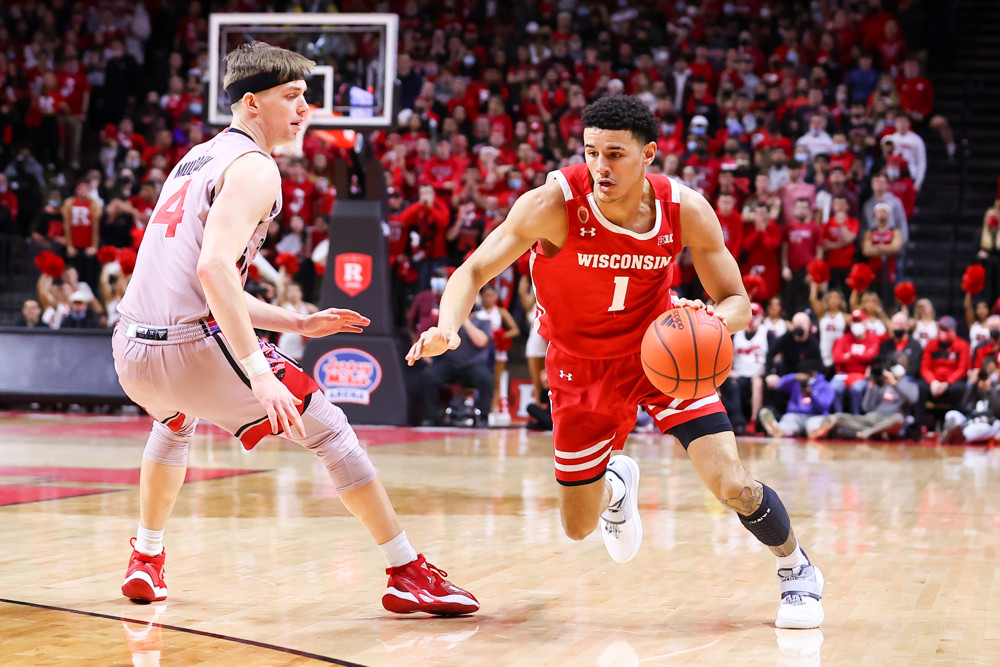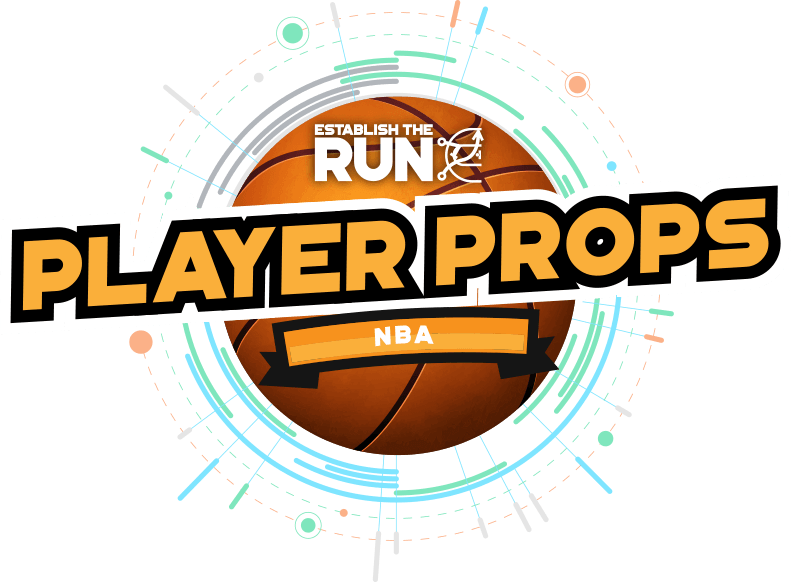The American Gaming Association estimates that legal and illegal wagers on March Madness total $9.2 billion. Approximately 40 million people will fill out a bracket over the next few days. American employers stand to lose billions of dollars — in 2019, Challenger, Gray & Christmas estimated that number would be $13.3 billion before the tournament got canceled — as productivity torpedoes on Thursday and Friday.
For a few weekends in mid-March every year, the sports world shifts its focus to college basketball. Even people who don’t pay attention to sports will fill out a bracket and follow the action, at least until they realize this isn’t the year they hit the roughly 1-in-2-billion chance of correctly predicting all 63 games. Millions are forced into answering the questions that will be debated on every sports network until the ball is tipped on Thursday: Is this the year Gonzaga finally takes it home? Can Coach K complete a legendary career with a storybook ending? Who’s this year’s Cinderella?
It’s fun to make a bracket pool with your family and friends. Many would argue that it becomes substantially less fun when someone in their bracket pool takes it too seriously.
To which I would respond: You know what else is fun?
Winning.
With that in mind, let’s take a look at how to suck all of the fun out of filling out a bracket in order to give yourself an edge over your competitors.
IMPORTANT: To get the data you need to win your pool (public advance percentages and model-driven actual advance probabilities), head to https://www.teamrankings.com/etr.
WHO SHOULD I PICK TO WIN IT ALL?
In 2021, Gonzaga was historically dominant entering the tournament. Even today, they still boast the second-highest adjusted efficiency margin of the past two decades on KenPom despite getting blown out in the national championship. As a result, 34.4% of brackets filled out on ESPN last season picked the undefeated Bulldogs to win the national championship. That means that even if the Zags had hypothetically won last season and you were in a 100-person pool, the rest of your bracket still would’ve needed to be better than one-third of the field for you to get first place. Coincidentally, KenPom gave the Zags exactly a 34.4% chance of bringing the title back to Spokane last March. In other words, there wasn’t much of an edge in picking the Bulldogs because their win probability was in line with the percentage of people picking them. Backing Gonzaga increased your points expectation but didn’t actually boost your odds of winning in a lot of pools.
But if it was just you and one other person in a pool, Gonzaga would have been the easy choice. Filling out a bracket is similar to daily fantasy sports in that regard: The need to be contrarian increases with pool size.
Most pool-hosting sites make it easy to project bracket ownership. You can see ESPN bracket ownership by clicking the “Who Picked Whom” tab on the Tournament Challenge website. Here’s the 2021 version. Other platforms have similar versions. Check ownership on Wednesday night or Thursday morning and let it guide your process. It’s also important to consider your pool demographics (location, fandom, etc.). For example, I’m an Illinois student, and I was in a large pool (well over 100 people) last year in which the majority of people picked the Fighting Illini. I picked Gonzaga in that pool and it was a contrarian play. If your pool is with friends and family, factor in their biases.
Sites like KenPom, TeamRankings, and FiveThirtyEight use advanced models to predict the probability that each team will advance to a given round. Sportsbooks also post odds for each team to win the national title and make the Final Four (and as the end of the week draws closer, we’ll probably get similar markets for the Sweet 16 and Elite Eight). You can compare those numbers to bracket ownership to decide which teams to back for the tournament.
HOW CONTRARIAN DO I NEED TO BE?
At the same time, you want to be contrarian in the right spots. There’s no need to force upsets simply for the sake of forcing upsets, especially in the early rounds. Many people have rules they abide by — e.g. always pick at least one 12 seed to beat a 5 seed — when the payout for being right isn’t worth the risk. This is where scoring settings come into play. On ESPN, every round is worth 320 points. That means each first-round game is worth 10 points, while correctly picking the national champion is worth 320. In a decent-sized pool, you will almost always need to pick the champion correctly to win. It makes sense to be contrarian in later rounds because the payout for being correct is winning your pool. Picking upsets early on just for the sake of being different often isn’t worth it when the payout is only 10 points.
This all goes out the window if you’re in a non-standard pool where you get more points for correctly predicting an upset. If you’re in a pool like that, you could use a similar process as above to guess which upsets your opponents will take and then use Vegas odds to find leverage points. In most pools (basically any pool that isn’t tiny), you want to be contrarian in high-leverage spots. Your scoring settings and pool size impact which spots are high-leverage and how contrarian you need to be, respectively.
In best ball, we talk about drafting as if your picks in the first few rounds hit because you probably aren’t winning your league if your high-value picks bust. In bracket pools, we want to fill out our brackets assuming we got the national champion correct. If you pick Gonzaga to win it all in a decent-sized pool, you still need to differentiate yourself from everyone else who has the Bulldogs, so maybe you pick a contrarian Final Four team or a few early-round upsets. But if you go contrarian on your national champion and get it right, you don’t need much else to win your pool unless there’s a ton of people in it, so it’s savvy to maximize your expected points by playing it safe in the early rounds.
Plus, it’s actually sometimes contrarian to go chalk in the first two rounds. The first round is 32 independent events; of course the less likely outcome is going to happen in some of them. The problem is identifying in advance which teams will get upset is easier said than done. In a soft pool, a lot of people feel the need to pick upsets because they know there will be a few, so picking the Vegas favorite in every first-round game can even be +EV sometimes depending on pool size. Spreads for the Round of 64 are a highly efficient market considering the number of eyeballs and dollars wagered on the games, so be sure to use the odds to fill out your bracket even if you aren’t comfortable wagering on the individual games.
If you’re in a truly massive pool with thousands of people, it makes sense to swing for the fences and pick some Cinderella stories in the early rounds (again, use the aforementioned models and sportsbook odds to pinpoint which teams are undervalued by the public).
Otherwise, you only want to be contrarian in high-leverage spots. In small pools, you don’t need to pick anything too unlikely to be in good shape. In slightly larger pools, you have two choices:
- If you pick a chalk champion, you need to be contrarian elsewhere, whether that means picking a Cinderella Final Four team or making riskier picks in the early rounds.
- If you pick a contrarian champion (or generally go high-risk in the final rounds), there’s no need to strive for perfection early on, and you can play it safe by mostly relying on the models and odds.
QUICK HITTERS
- Ignore the trends that will dominate sports media this week. Yes, a 12 seed usually upsets a 5. But FiveThirtyEight has all four 5 seeds with at least a 62% win probability. Despite that, the probability that all four win is just 32.4%. So yes, there will probably be a 12-over-5 upset, but that doesn’t mean it’s +EV to force one. Another good example is when pundits say to avoid picking all 1 seeds in the Final Four. That’s just one exact outcome out of many possible outcomes — so it’s certainly unlikely — but it is one of the most probable exact outcomes.
- TeamRankings investigated whether past tournament success affected performance in the current year and found no correlation. However, they did find that the public overcorrected for tournament play in the previous season. Overcome your psychological biases about a team that burned you or was a Cinderella story in a past season and focus on current-season data. This could apply to Gonzaga, who lost in the title game last year after more than one-third of all brackets had them winning it all. They’re once again the top overall seed and easily the most efficient team on KenPom; will the public punish them for 2021?
- Monitor team news for information that isn’t baked into models like KenPom, TeamRankings, and FiveThirtyEight. For example, Creighton’s starting point guard got hurt recently. Houston lost two of their best players midway through the year. Baylor has a guard who has been day-to-day without playing a game for two months. The models are good, but there needs to be a mental adjustment in some scenarios.



